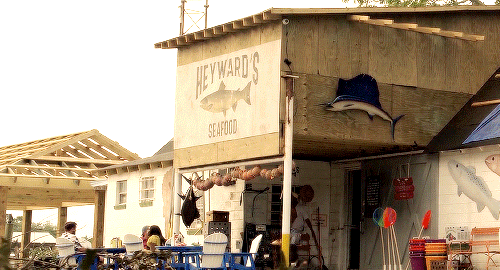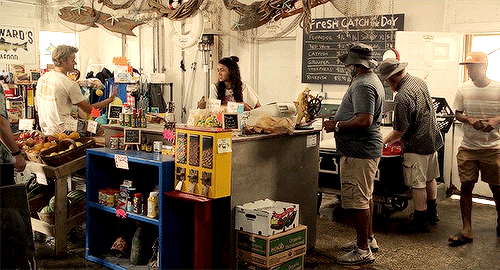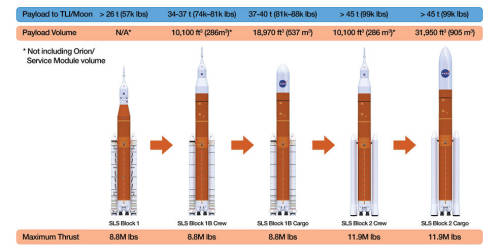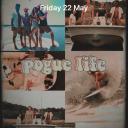The Perseid Meteor Shower Is Here!
The Perseid Meteor Shower Is Here!

Image Credit: NASA/Bill Ingalls
The Perseids are at their peak this week!
The Perseid meteor shower, one of the biggest meteor showers of the year, will be at its brightest early in the morning on Wednesday, August 12. Read on for some tips on how to watch the night sky this week – and to find out: what exactly are the Perseids, anyway?

Credit: NASA/Bill Ingalls
Your best chance to spot the Perseids will be between 2 AM and dawn (local time) the morning of August 12. Find a dark spot, avoid bright lights (yes, that includes your phone) and get acclimated to the night sky.
Your eyes should be at peak viewing capacity after about 30 minutes; though the Moon may block out some of the dimmer meteors, you should still be able to see up to 15-20 an hour. If you’re not an early bird, you can try and take a look soon after sunset (around 9 PM) on the 11th, though you may not see as many Perseids then.

Credit: NASA/MEO
If it’s too cloudy, or too bright, to go skywatching where you are, you can try again Wednesday or Thursday night – or just stay indoors and watch the Perseids online!
Our Meteor Watch program will be livestreaming the Perseids from Huntsville, Alabama on Facebook (weather permitting), starting around 9 p.m. EDT on August 11 and continuing through sunrise.
So… why are they called the Perseids?
Because all of a meteor shower’s meteors have similar orbits, they appear to come from the same place in the sky – a point called the radiant.

The radiant for the Perseids, as you might guess from the name, is in the constellation Perseus, found near Aries and Taurus in the night sky.
But they’re not actually coming from Perseus, right?

Credit: NASA/Joel Kowsky
Right! The Perseids are actually fragments of the comet Swift-Tuttle, which orbits within our solar system.
If you want to learn more about the Perseids, visit our Watch the Skies blog or check out our monthly “What’s Up” video series. Happy viewing!
Make sure to follow us on Tumblr for your regular dose of space: http://nasa.tumblr.com
More Posts from Mousoudi20 and Others

Women’s History Month Spotlight: Gabriella Sanchez
Oh, hello. Looking to celebrate an incredible WOC artist for Women’s History Month? Let us suggest one of our Tumblr @creatrs, Gabriella Sanchez (@thatnoisegallery). This LA-based Mexican-American artist is one you’re going to want to pay attention to. In the interest of celebrating women and how they impact their world, we’ve touched base with her to discuss how feminism intersects with her work. Read on, reader.
Let’s start by telling us a little bit about yourself. How did you become the artist that you are today?
That’s a big question in which the true answer is that it’s a result of all my experiences and interactions that are too many to list here. The more direct but partial answer is that I went to college without knowing what I wanted to do and started taking art electives until those became the only classes I was taking. I was really attracted to the freedom of being an artist—the idea that you could spend your time seeking out whatever ideas interested you and then turn into something that people could engage with and it could be under this expansive umbrella of art. That was and still is thrilling to me.
As a Mexican-American woman, your experiences and intersections in race, gender, and socioeconomic status all play a part in your work. Why do you think it’s important for art spaces to exhibit more work by women of color?
I would say that yes, the things you mentioned above play a role in my work, but that’s because everyone’s personal experiences play some role in their work even if they aren’t acknowledged. It’s just framed in a different light when a person from any marginalized group creates art. Specifically, in painting, the work is an assertion of what an artist thinks is beautiful or interesting or worth looking at and that inherently is a message and a showcase of their viewpoint. An artist who paints a flower versus an artist who paints a bus bench with graffiti are both painting what they want you to see. In that sense, the work could be seen as the same. They just get framed in a different light. That’s why it’s important for artists of marginalized groups to be included in these art spaces, so that our context of viewing work gets larger so we can really see the work without knee-jerk biases blocking our ability to fully engage with a work.

Let’s talk about your featured artwork. Women of color and trans women are people most affected by violence. Talk us through the process of this piece and why it’s important?
The idea behind this piece is that this is a collective issue. Not an issue that is just on the shoulders or survivors or only women, but everyone. Only with that mentality will we be able to make moves towards a future where women are safe and we can all move forward [with] equality and equity for everyone.
If you want more of Gabriella’s art, follow her at @thatnoisegallery. If you want more interviews with women making an impact in their fields, stay tuned to @action! We’re celebrating Women’s History Month all month long.



packin’ up
For its first-of-a-kind tools #ITER demands creativity and innovation from industry, with impact on spin-off technologies and markets going well beyond plasma physics. #ITER's head of comms, @LabanCoblentz in @OpenAccessGov. https://t.co/MubR6Sowlt #WeAreITER https://t.co/JoXyVRtvQM
We Just Took a Major Step Forward in our Moon Landing Program
As part of the Commercial Lunar Payload Services (CLPS) initiative, we’ve selected the first American companies that will deliver our science and technology payloads to the Moon.

Seen above from left to right are lander prototypes from:
Astrobotic of Pittsburgh, Pennsylvania
Intuitive Machines of Houston, Texas
Orbit Beyond of Edison, New Jersey

Astrobotic of Pittsburgh has proposed to fly as many as 14 payloads to a large crater on the near side of the Moon.

Intuitive Machines of Houston has proposed to fly as many as five payloads to a scientifically intriguing dark spot on the Moon.

Orbit Beyond of Edison, New Jersey, has proposed to fly as many as four payloads to a lava plain in one of the Moon’s craters.
Each company is charged with demonstrating technology that will shape the development of future landers and other exploration systems needed for humans to return to the Moon’s surface under the new Artemis program. Artemis is the program that will send the first woman and the next man to the Moon by 2024 and develop a sustainable human presence on the Moon by 2028. The program takes its name from the twin sister of Apollo and goddess of the Moon in Greek mythology.

Together we are going to the Moon—to stay.
Watch the CLPS announcement on our YouTube channel to learn about how each company will prepare us for human missions to the Moon: https://www.youtube.com/watch?v=qODDdqK9rL4
Make sure to follow us on Tumblr for your regular dose of space: http://nasa.tumblr.com.



outer banks → places: heyward’s seafood
An unwrapped port cell door. Its size? It's massive - over 4 m wide, almost 4 m high, 80 cm deep and 60 tonnes heavy. 46 of these nuclear confinement doors will sit at the far end of openings around the #tokamak. https://t.co/uZcVBic4l9 #fusionenergy #WeAreITER https://t.co/lFsznJEsMP
We Like Big Rockets and We Cannot Lie: Saturn V vs. SLS
On this day 50 years ago, human beings embarked on a journey to set foot on another world for the very first time.

At 9:32 a.m. EDT, millions watched as Apollo astronauts Neil Armstrong, Buzz Aldrin and Michael Collins lifted off from Launch Pad 39A at the Kennedy Space Center in Cape Canaveral, Florida, flying high on the most powerful rocket ever built: the mighty Saturn V.

As we prepare to return humans to the lunar surface with our Artemis program, we’re planning to make history again with a similarly unprecedented rocket, the Space Launch System (SLS). The SLS will be our first exploration-class vehicle since the Saturn V took American astronauts to the Moon a decade ago. With its superior lift capability, the SLS will expand our reach into the solar system, allowing astronauts aboard our Orion spacecraft to explore multiple, deep-space destinations including near-Earth asteroids, the Moon and ultimately Mars.

So, how does the Saturn V measure up half a century later? Let’s take a look.
Mission Profiles: From Apollo to Artemis
Saturn V

Every human who has ever stepped foot on the Moon made it there on a Saturn V rocket. The Saturn rockets were the driving force behind our Apollo program that was designed to land humans on the Moon and return them safely back to Earth.

Developed at our Marshall Space Flight Center in the 1960s, the Saturn V rocket (V for the Roman numeral “5”) launched for the first time uncrewed during the Apollo 4 mission on November 9, 1967. One year later, it lifted off for its first crewed mission during Apollo 8. On this mission, astronauts orbited the Moon but did not land. Then, on July 16, 1969, the Apollo 11 mission was the first Saturn V flight to land astronauts on the Moon. In total, this powerful rocket completed 13 successful missions, landing humans on the lunar surface six times before lifting off for the last time in 1973.
Space Launch System (SLS)

Just as the Saturn V was the rocket of the Apollo generation, the Space Launch System will be the driving force behind a new era of spaceflight: the Artemis generation.

During our Artemis missions, SLS will take humanity farther than ever before. It is the vehicle that will return our astronauts to the Moon by 2024, transporting the first woman and the next man to a destination never before explored – the lunar South Pole. Over time, the rocket will evolve into increasingly more powerful configurations to provide the foundation for human exploration beyond Earth’s orbit to deep space destinations, including Mars.
SLS will take flight for the first time during Artemis 1 where it will travel 280,000 miles from Earth – farther into deep space than any spacecraft built for humans has ever ventured.
Size: From Big to BIGGER
Saturn V

The Saturn V was big.
In fact, the Vehicle Assembly Building at Kennedy Space Center is one of the largest buildings in the world by volume and was built specifically for assembling the massive rocket. At a height of 363 feet, the Saturn V rocket was about the size of a 36-story building and 60 feet taller than the Statue of Liberty!
Space Launch System (SLS)

Measured at just 41 feet shy of the Saturn V, the initial SLS rocket will stand at a height of 322 feet. Because this rocket will evolve into heavier lift capacities to facilitate crew and cargo missions beyond Earth’s orbit, its size will evolve as well. When the SLS reaches its maximum lift capability, it will stand at a height of 384 feet, making it the tallest rocket in the world.
Power: Turning Up the Heat
Saturn V
For the 1960s, the Saturn V rocket was a beast – to say the least.
Fully fueled for liftoff, the Saturn V weighed 6.2 million pounds and generated 7.6 million pounds of thrust at launch. That is more power than 85 Hoover Dams! This thrust came from five F-1 engines that made up the rocket’s first stage. With this lift capability, the Saturn V had the ability to send 130 tons (about 10 school buses) into low-Earth orbit and about 50 tons (about 4 school buses) to the Moon.
Space Launch System (SLS)

Photo of SLS rocket booster test
Unlike the Saturn V, our SLS rocket will evolve over time into increasingly more powerful versions of itself to accommodate missions to the Moon and then beyond to Mars.

The first SLS vehicle, called Block 1, will weigh 5.75 million pounds and produce 8.8 million pounds of thrust at time of launch. That’s 15 percent more than the Saturn V produced during liftoff! It will also send more than 26 tons beyond the Moon. Powered by a pair of five-segment boosters and four RS-25 engines, the rocket will reach the period of greatest atmospheric force within 90 seconds!

Following Block 1, the SLS will evolve five more times to reach its final stage, Block 2 Cargo. At this stage, the rocket will provide 11.9 million pounds of thrust and will be the workhorse vehicle for sending cargo to the Moon, Mars and other deep space destinations. SLS Block 2 will be designed to lift more than 45 tons to deep space. With its unprecedented power and capabilities, SLS is the only rocket that can send our Orion spacecraft, astronauts and large cargo to the Moon on a single mission.
Build: How the Rockets Stack Up
Saturn V

The Saturn V was designed as a multi-stage system rocket, with three core stages. When one system ran out of fuel, it separated from the spacecraft and the next stage took over. The first stage, which was the most powerful, lifted the rocket off of Earth’s surface to an altitude of 68 kilometers (42 miles). This took only 2 minutes and 47 seconds! The first stage separated, allowing the second stage to fire and carry the rest of the stack almost into orbit. The third stage placed the Apollo spacecraft and service module into Earth orbit and pushed it toward the Moon. After the first two stages separated, they fell into the ocean for recovery. The third stage either stayed in space or crashed into the Moon.
Space Launch System (SLS)
Much like the Saturn V, our Space Launch System is also a multi-stage rocket. Its three stages (the solid rocket boosters, core stage and upper stage) will each take turns thrusting the spacecraft on its trajectory and separating after each individual stage has exhausted its fuel. In later, more powerful versions of the SLS, the third stage will carry both the Orion crew module and a deep space habitat module.
A New Era of Space Exploration
Just as the Saturn V and Apollo era signified a new age of exploration and technological advancements, the Space Launch System and Artemis missions will bring the United States into a new age of space travel and scientific discovery.
Join us in celebrating the 50th anniversary of the Apollo 11 Moon landing and hear about our future plans to go forward to the Moon and on to Mars by tuning in to a special two-hour live NASA Television broadcast at 1 p.m. ET on Friday, July 19. Watch the program at www.nasa.gov/live.
Make sure to follow us on Tumblr for your regular dose of space: http://nasa.tumblr.com.

hot
Be Glad You Don’t Have to Dust in Space!
Throw open the windows and break out the feather duster, because spring is here and it’s time to do a little cleaning! Fortunately, no one has to tidy up the dust in space — because there’s a lot of it — around 100 tons rain down on Earth alone every day! And there’s even more swirling around the solar system, our Milky Way galaxy, other galaxies and the spaces in between.

By studying the contents of the dust in your house — which can include skin cells, pet fur, furniture fibers, pollen, concrete particles and more — scientists learn a lot about your environment. In the same way, scientists can learn a lot by looking at space dust. Also called cosmic dust, a fleck of space dust is usually smaller than a grain of sand and is made of rock, ice, minerals or organic compounds. Scientists can study cosmic dust to learn about how it formed and how the universe recycles material.

“We are made of star-stuff,” Carl Sagan famously said. And it’s true! When a star dies, it sheds clouds of gas in strong stellar winds or in an explosion called a supernova. As the gas cools, minerals condense. Recent observations by our SOFIA mission suggest that in the wake of a supernova shockwave, dust may form more rapidly than scientists previously thought. These clouds of gas and dust created by the deaths of stars can sprawl across light-years and form new stars — like the Horsehead Nebula pictured above. Disks of dust and gas form around new stars and produce planets, moons, asteroids and comets. Here on Earth, some of that space dust eventually became included in living organisms — like us! Billions of years from now, our Sun will die too. The gas and dust it sheds will be recycled into new stars and planets and so on and so forth, in perpetuity!

Astronomers originally thought dust was a nuisance that got in the way of seeing the objects it surrounded. Dust scatters and absorbs light from stars and emits heat as infrared light. Once we started using infrared telescopes, we began to understand just how important dust is in the universe and how beautiful it can be. The picture of the Andromeda galaxy above was taken in the infrared by our Spitzer Space Telescope and reveals detailed spirals of dust that we can’t see in an optical image.

We also see plenty of dust right here in our solar system. Saturn’s rings are made of mostly ice particles and some dust, but scientists think that dust from meteorites may be darkening the rings over time. Jupiter also has faint dusty rings, although they’re hard to see — Voyager 1 only discovered them when it saw them backlit by the Sun. Astronomers think the rings formed when meteorite impacts on Jupiter’s moons released dust into orbit. The Juno spacecraft took the above picture in 2016 from inside the rings, looking out at the bright star Betelgeuse.

Copyright Josh Calcino, used with permission
And some space dust you can see from right here on Earth! In spring or autumn, right before sunrise or after sunset, you may be able to catch a glimpse of a hazy cone of light above the horizon created when the Sun’s rays are scattered by dust in the inner solar system. You can see an example in the image above, extending from above the tree on the horizon toward a spectacular view of the Milky Way. This phenomenon is called zodiacal light — and the dust that’s reflecting the sunlight probably comes from icy comets. Those comets were created by the same dusty disk that that formed our planets and eventually you and the dust under your couch!
Make sure to follow us on Tumblr for your regular dose of space: http://nasa.tumblr.com
Another #LEGO model! ENGAGE, Europe's architect/engineer contractor for #ITER construction, presents a colourful LEGO model of the #Tokamak Building at their #IBF19 exhibition stand. #WeAreITER @fusionforenergy https://t.co/4w7rTpsLSU
-
 tajthebear liked this · 1 year ago
tajthebear liked this · 1 year ago -
 enecemtivil liked this · 1 year ago
enecemtivil liked this · 1 year ago -
 santolokhochstaf liked this · 1 year ago
santolokhochstaf liked this · 1 year ago -
 thevoiceofmadness liked this · 3 years ago
thevoiceofmadness liked this · 3 years ago -
 blueishdream liked this · 3 years ago
blueishdream liked this · 3 years ago -
 uniquepeachslimeprofessor liked this · 3 years ago
uniquepeachslimeprofessor liked this · 3 years ago -
 puffedwheatsquare liked this · 3 years ago
puffedwheatsquare liked this · 3 years ago -
 manesalex reblogged this · 3 years ago
manesalex reblogged this · 3 years ago -
 miladyoana liked this · 3 years ago
miladyoana liked this · 3 years ago -
 kleinepoetin reblogged this · 3 years ago
kleinepoetin reblogged this · 3 years ago -
 illmamnim-spamming reblogged this · 3 years ago
illmamnim-spamming reblogged this · 3 years ago -
 illmamnim-spamming liked this · 3 years ago
illmamnim-spamming liked this · 3 years ago -
 dramaqn reblogged this · 3 years ago
dramaqn reblogged this · 3 years ago -
 with-fervor reblogged this · 3 years ago
with-fervor reblogged this · 3 years ago -
 with-fervor liked this · 3 years ago
with-fervor liked this · 3 years ago -
 wwanderllust reblogged this · 3 years ago
wwanderllust reblogged this · 3 years ago -
 someof-thisrandom liked this · 3 years ago
someof-thisrandom liked this · 3 years ago -
 sharkinton liked this · 3 years ago
sharkinton liked this · 3 years ago
